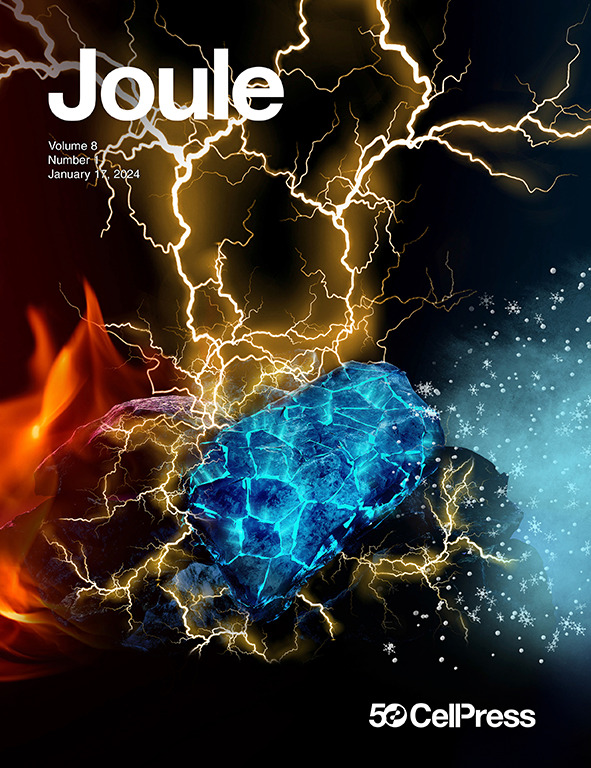闭环自主液体电解质设计
IF 35.4
1区 材料科学
Q1 CHEMISTRY, PHYSICAL
引用次数: 0
摘要
优化锂离子电池的液体电解质配方通常是一项耗费大量时间的研发工作。在最近一期的《细胞报告物理科学》中,Berg和Zhang等人展示了使用闭环自动化方法来优化电解质混合物。使用这种方法,作者展示了改进的容量和库仑效率。本文章由计算机程序翻译,如有差异,请以英文原文为准。
Closing the loop for autonomous liquid electrolyte design
Optimizing liquid electrolyte formulations for Li-ion batteries is typically a massive time-demanding R&D endeavor. In a recent issue of Cell Reports Physical Science, Berg and Zhang et al. demonstrated the use of a closed-loop automated approach to optimize electrolyte mixtures. Using this approach, the authors showed improved capacities and coulombic efficiencies.
求助全文
通过发布文献求助,成功后即可免费获取论文全文。
去求助
来源期刊

Joule
Energy-General Energy
CiteScore
53.10
自引率
2.00%
发文量
198
期刊介绍:
Joule is a sister journal to Cell that focuses on research, analysis, and ideas related to sustainable energy. It aims to address the global challenge of the need for more sustainable energy solutions. Joule is a forward-looking journal that bridges disciplines and scales of energy research. It connects researchers and analysts working on scientific, technical, economic, policy, and social challenges related to sustainable energy. The journal covers a wide range of energy research, from fundamental laboratory studies on energy conversion and storage to global-level analysis. Joule aims to highlight and amplify the implications, challenges, and opportunities of novel energy research for different groups in the field.
 求助内容:
求助内容: 应助结果提醒方式:
应助结果提醒方式:


